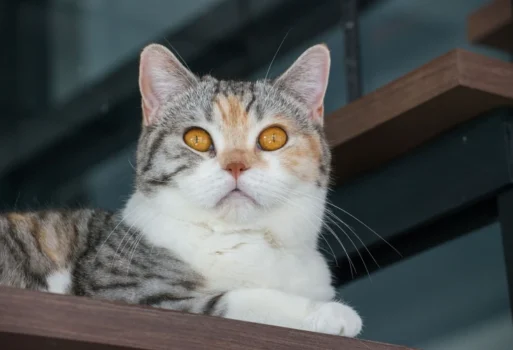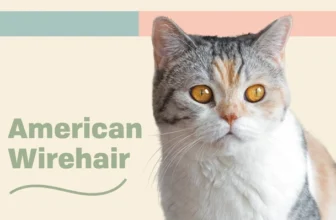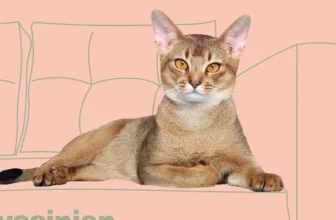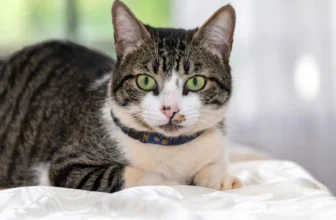As a dedicated American Wirehair owner, you want your feline companion to thrive and live a long, healthy life. One of the most important ways to ensure your cat’s wellbeing is through proper nutrition. However, feeding your cat correctly can be a confusing and overwhelming task, especially with so many options and conflicting information out there. It’s easy to make mistakes when it comes to feeding your American Wirehair, but fear not! In this comprehensive guide, we’ll cover the most common mistakes to avoid when feeding your American Wirehair, providing you with the knowledge and strategies to create a healthy and balanced diet for your beloved pet.
Mistake #1: Overfeeding
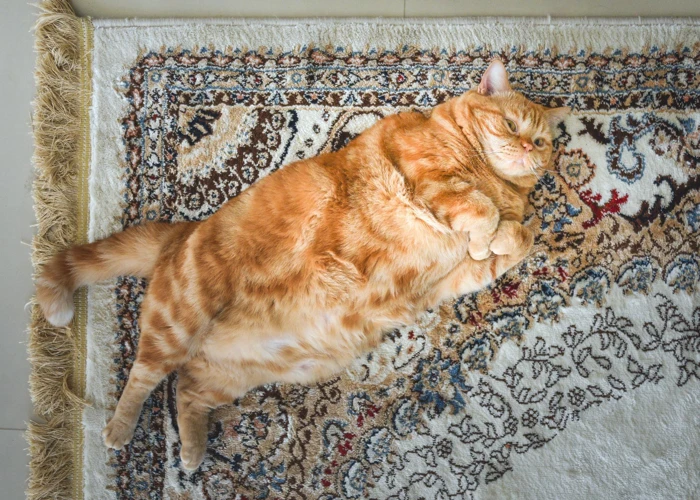
Are you overfeeding your American Wirehair? While you may think you are showing your love through food, overfeeding can lead to various health issues and a decreased quality of life for your feline companion. It’s important to understand the caloric needs of your cat and how to control portion sizes, as well as plan out their feeding frequency and schedule. In this section, we will explore common mistakes when it comes to overfeeding your American Wirehair and provide helpful tips on how to avoid them.
Understanding the Caloric Needs of American Wirehairs
As a pet owner, one of the most important things you can do to keep your American Wirehair healthy is to provide them with a balanced diet that meets their specific nutritional needs. Understanding your cat’s caloric needs is crucial in ensuring they are receiving the appropriate amount of food to maintain a healthy weight.
Caloric Needs: American Wirehairs have a moderate activity level, so their ideal daily caloric intake will depend on factors such as their weight, age, and gender. On average, adult American Wirehairs typically require between 200-300 calories per day. However, if your American Wirehair is overweight or obese, they may need fewer calories to reach a healthy weight, which we’ll discuss more in the Mistake #1 section.
The table below can serve as a guide for how much to feed your American Wirehair according to their weight and age:
| Weight (lbs) | Age (months) | |
|---|---|---|
| 1-6 | 7-12 | |
| 4 | 45 | 45 |
| 6 | 65 | 75 |
| 8 | 85 | 105 |
| 10 | 100 | 125 |
| 12 | TBD | TBD |
It’s important to note that this table is just a guide and not a one-size-fits-all solution. Your American Wirehair’s individual calorie needs may vary, and consulting with your veterinarian can provide a more accurate assessment. It’s also important to consider your cat’s activity level, as more active cats may require more calories to maintain their weight.
By understanding the caloric needs of your American Wirehair, you can help ensure they are receiving a balanced diet that meets their unique nutritional requirements. Be sure to also avoid the common mistakes we’ll discuss in the following sections to further promote your cat’s health and wellbeing.
To learn more about feeding your American Wirehair, check out our article on creating a balanced diet to address health issues.
How to Control Portion Sizes
Controlling the portion sizes of your American Wirehair’s meals helps to prevent overfeeding, which can lead to obesity and other health issues. Many cat owners overfeed their cats, not realizing the potential harm it can cause. The amount of food your American Wirehair needs depends on various factors, such as their age, weight, and activity level.
When it comes to controlling portion sizes, a measuring cup or a kitchen scale is handy for accurately measuring the amount of food you give to your cat. The recommended daily caloric intake for a typical adult American Wirehair is between 250-300 calories per day. However, it is always best to consult with your veterinarian to determine your cat’s specific caloric requirements.
The table below shows estimated daily portion sizes based on the weight and activity level of your American Wirehair:
| Weight | Sedentary | Active | Highly Active |
|---|---|---|---|
| 5 lbs | ¼ cup (30g) | ⅓ cup (40g) | ½ cup (60g) |
| 10 lbs | ½ cup (60g) | ¾ cup (90g) | 1 cup (120g) |
| 15 lbs | ¾ cup (90g) | 1 cup (120g) | 1¼ cups (150g) |
It’s important to note that these are just estimates, and portion sizes may need to be adjusted based on your American Wirehair’s individual needs. Always monitor their weight and adjust their food intake accordingly.
In addition to controlling portion sizes, it’s essential to feed your American Wirehair the right type of food to ensure they receive the proper nutrients they need to maintain good health. For more information about raw versus commercial cat food, see our article on the benefits and drawbacks of feeding your American Wirehair a raw or commercial diet.
Feeding Frequency and Meal Planning
Feeding Frequency and Meal Planning are crucial factors in maintaining your American Wirehair’s health and well-being. Knowing when and how much to feed your furry friend can help prevent overeating, obesity, and health complications.
Understanding Feeding Frequency
The first thing to bear in mind is how often to feed your American Wirehair. According to experts, adult cats should be fed two to three small meals per day, and kittens should be fed more frequently to accommodate their growing bodies’ caloric needs.
Meal Planning
When planning your cat’s meals, focus on providing a balanced diet that fits their nutritional needs. Consult your vet for recommendations regarding calorie intake and specific dietary requirements based on your cat’s age, weight, and health.
Create a meal schedule that accommodates your cat’s feeding needs and your household routine. For instance, if you work during the day, it is best to schedule their meals before and after work, so you can regulate their portions and supervise their feeding habits.
Portion Control
Controlling the portions of your cat’s diet plays a crucial role in ensuring a healthy weight and avoiding overfeeding. Avoid free-feeding, unless approved by your veterinarian as an effective method to feed your cat.
Using an automatic feeder would go a long way in controlling your cat’s portion sizes. Automatic feeders will ensure that your cat’s meals are evenly distributed, and the portions are appropriate for their weight and age.
Water Availability
Keeping your cat hydrated is just as important as feeding. Provide your cat constant access to clean and fresh water, preferably in a separate bowl from their food. Regularly change their water to keep it fresh and encourage your cat to drink.
Feeding frequency, meal planning, and portion control are vital aspects of maintaining your American Wirehair’s health. A balanced diet, combined with a suitable feeding schedule and portion control, will help prevent obesity, diabetes, and other health complications. Be sure to consult with your veterinarian to choose the best dietary plan that meets your cat’s individual nutritional requirements.
For more information about American Wirehair diet and health, check out our related articles: benefits and drawbacks of feeding American Wirehairs, diet and oral health for American Wirehairs, obesity in American Wirehairs and the right diet and exercise, and nutrition and American Wirehair coat and skin health and protein in American Wirehair diet.
Mistake #2: Feeding the Wrong Type of Food
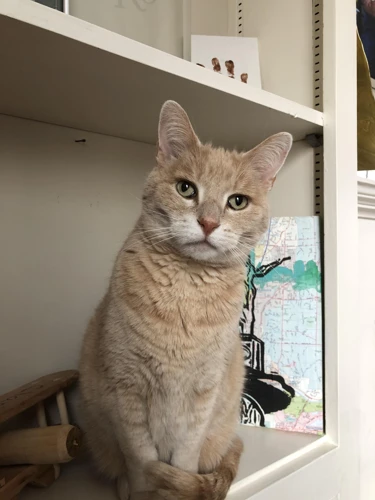
When it comes to feeding your American Wirehair, choosing the wrong type of food can have serious consequences for their health and wellbeing. With so many options available, it can be perplexing to know what to look for in terms of quality and nutrition. However, selecting the right kind of food is crucial for ensuring your furry friend stays healthy and happy. In this section, we will explore the common mistakes owners make when it comes to choosing the wrong type of food for their American Wirehair and how you can avoid them.
The Importance of High-Quality Protein Sources
When it comes to feeding your American Wirehair, the quality of protein in their diet is crucial. High-quality protein sources provide the necessary amino acids that your cat needs to maintain healthy muscles, skin, and fur. However, not all protein sources are created equal.
Here are some key factors to consider when choosing high-quality protein sources for your cat’s diet:
- The source of the protein: Look for animal-based proteins such as chicken, turkey, fish, and beef. These protein sources are complete and contain all the essential amino acids that your cat needs.
- The amount of protein: Your cat’s diet should consist of at least 30% protein. However, make sure to avoid diets that are too high in protein, as they can cause kidney problems in some cats.
- The processing method: Avoid cat foods that contain by-products or meat meals. These low-quality protein sources are the result of a process that breaks down whole meat into a powder, removing all of the moisture and fat. This results in a product with a lower quality protein content.
Choosing high-quality protein sources is essential to ensure your American Wirehair has a healthy and balanced diet. Be sure to read the ingredient labels carefully and choose a diet that meets your cat’s needs. If you’re unsure about what to feed your cat, talk to your veterinarian for recommendations. By taking the time to choose high-quality protein sources for your cat’s diet, you’ll be ensuring that they stay healthy and happy for years to come.
The Role of Fat and Carbohydrates in Your Cat’s Diet
Your American Wirehair’s diet should provide a balance of protein, fat, and carbohydrates. Fat and carbohydrates are critical macronutrients that your cat needs for proper growth and development. Here are some important things to keep in mind when it comes to these two nutrients:
- Fat – Fat is an essential part of your American Wirehair’s diet as it provides energy and helps with the absorption of certain vitamins. However, it’s essential to keep in mind that not all fats are created equal. Make sure to choose a diet that relies on healthy fats like Omega-3’s and Omega-6’s, which are found in fish oil and other similar sources. Too much fat in your cat’s diet can lead to obesity and other health problems.
- Carbohydrates – Carbohydrates provide energy and support the digestive system in your American Wirehair. However, too many carbohydrates can cause weight gain and other health problems. Make sure to choose a diet that contains healthy carbohydrates like brown rice, sweet potatoes, and other similar sources. Avoid diets with high levels of carbohydrates from sources like corn, wheat, and soy, which can cause digestive problems and allergies in some cats.
It’s essential to keep in mind that your cat’s dietary needs may change as they age or develop certain health conditions. For example, older cats may need fewer carbohydrates and more protein to maintain muscle mass, while overweight cats may require a diet with lower fat and calorie content to promote weight loss. Always consult with your veterinarian to determine the best dietary plan for your American Wirehair.
Reading Labels and Making Informed Decisions
In order to avoid feeding your American Wirehair the wrong type of food, it’s important to read labels and make informed decisions when choosing their diet. Here are some tips to help you make sense of those confusing labels:
1. Look for High-Quality Protein: American Wirehairs require a diet high in protein. When reading labels, make sure to look for high-quality protein sources like chicken, turkey, beef, and fish. Avoid foods that have “meat by-products” as these can contain low-quality protein sources.
2. Avoid Fillers and Artificial Ingredients: Fillers like corn and soy can be difficult for cats to digest and provide little nutritional value. Artificial ingredients like preservatives, dyes, and flavors are also best avoided.
| Ingredients to Avoid: | Ingredients to Look For: |
| Corn | Chicken |
| Soy | Turkey |
| Wheat | Beef |
| Meat By-Products | Fish |
| Artificial Preservatives | Natural Preservatives (e.g. Vitamin C, Vitamin E) |
| Artificial Flavors and Colors | Natural Flavors (e.g. liver, salmon) |
3. Make Sure the Food Meets Nutritional Requirements: Cat food should meet the nutritional requirements set out by the Association of American Feed Control Officials (AAFCO). Look for a statement on the label that says “Formulated to meet the nutritional levels established by the AAFCO Cat Food Nutrient Profiles.” This ensures that the food provides a balanced diet for your cat.
By taking the time to read labels and make informed decisions, you can ensure that your American Wirehair is getting the right nutrition to keep them healthy and happy.
Mistake #3: Allowing Your Cat to Graze All Day
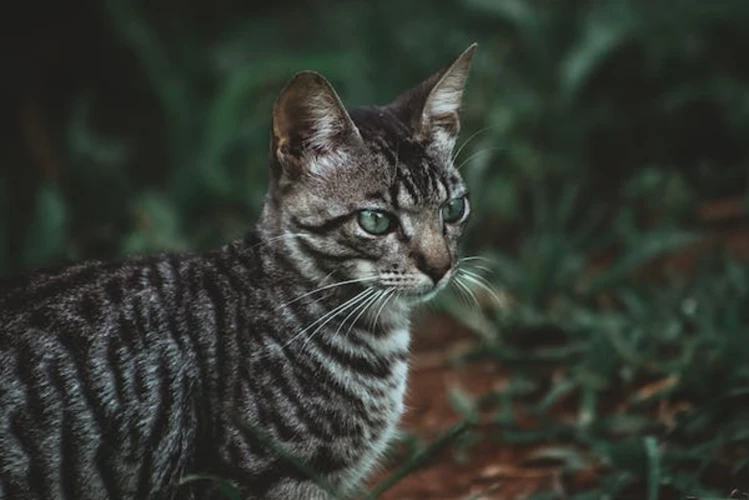
Do you leave a bowl of food out for your American Wirehair to graze on whenever they please? While it may seem convenient, free-feeding your cat can lead to a multitude of health problems in the long run. Allowing your cat to graze all day is a common mistake that many cat owners make, unaware of the negative impact it can have on their pet’s health and nutrition. In this section, we’ll explore the risks associated with constant access to food and provide alternatives for creating a feeding schedule that works for both you and your furry friend.
The Risks of Constant Access to Food
Allowing your American Wirehair cat to graze all day is a common mistake pet owners make when it comes to feeding their furry friend. However, constant access to food can have negative effects on your cat’s health. Here are some of the risks associated with free-feeding:
- Obesity: Without a set feeding schedule, your cat may eat more than they need to and gain excess weight. Obesity in cats can lead to other health problems, such as diabetes and joint issues.
- Dental problems: Grazing all day on dry kibble can lead to the accumulation of tartar and plaque, which can result in dental problems such as gum disease and tooth decay.
- Behavioral issues: When cats know that they have access to food at all times, they may become less interested in their meals and develop unhealthy eating habits.
It’s important to note that free-feeding is not appropriate for all cats, especially those with weight issues or medical conditions. If you’re unsure about whether or not free-feeding is right for your American Wirehair, consult with your veterinarian.
Creating a Feeding Schedule That Works
Creating a feeding schedule that works for your American Wirehair is crucial to maintaining their overall health and well-being. Here are some tips to keep in mind when creating a feeding schedule:
- Consider your cat’s age and weight: Younger cats and kittens may require more frequent meals, while overweight cats may benefit from smaller portions spread throughout the day.
- Stick to a routine: Try to feed your cat at the same times every day to help establish a routine. This can also help prevent them from overeating or becoming too hungry in between meals.
- Don’t forget about water: Make sure your cat always has access to fresh water, especially if they are on a dry food diet.
- Factor in any medication: If your cat requires medication that should be taken with food, be sure to schedule their meals accordingly.
- Be flexible: While establishing a routine is important, be prepared to make adjustments if needed. For example, if your cat seems to be losing weight, you may need to increase their portion sizes or feed them more frequently.
By taking these factors into consideration and creating a feeding schedule that works for both you and your cat, you can help ensure that they are getting the nutrients they need to thrive and maintain optimal health.
Alternatives to Free-Feeding
If you want to avoid the mistake of allowing your American Wirehair to graze all day, there are several alternatives to free-feeding that you can consider. One such alternative is scheduled feedings. This means that you give your cat a certain amount of food at set times throughout the day. For example, you could feed your cat once in the morning and once in the evening. This will help you control the portion sizes and ensure your cat is not overeating.
Another alternative is interactive feeding. This involves using devices or toys that require your cat to work for their food, such as puzzle feeders or treat balls. This not only helps with portion control but also provides mental and physical stimulation for your cat.
Slow feeding bowls are another option. These bowls have ridges or other obstacles that slow down your cat’s eating, preventing them from consuming too much food too quickly. This can be especially helpful for cats that tend to eat too fast, which can lead to digestive issues.
Finally, mealtime rewards can be another way to encourage your cat to eat at specific times. This involves giving your cat a treat or a small portion of wet food after they finish their meal. This helps to reinforce the idea that feeding times are special and encourages your cat to eat when their food is first presented to them.
By implementing one or more of these alternatives to free-feeding, you can help your American Wirehair maintain a healthy weight and avoid the negative health consequences of overeating.
Mistake #4: Ignoring Your Cat’s Unique Nutritional Needs
As a dedicated pet owner, you want your American Wirehair to live a healthy and happy life. However, ignoring their unique nutritional needs can often lead to health issues and a lower quality of life. It’s important to understand that each cat is different and requires specific nutrients based on their age, life stage, and any special dietary needs or restrictions they may have. In this section, we will explore the common mistakes of ignoring your cat’s unique nutritional needs and how to ensure your American Wirehair receives the best nourishment possible.
The Importance of Age and Life Stage
As your American Wirehair ages, their nutritional needs change. It is important to understand the specific needs of your cat’s age and life stage to ensure they are receiving the proper nutrients. Here are some key factors to consider:
- Senior Cats: Cats over the age of 7 are considered seniors, and may require a lower calorie diet to prevent obesity and related health issues. They may also benefit from diets that contain joint-supporting ingredients such as glucosamine and chondroitin.
- Kittens: Kittens have higher caloric needs and require a diet that is high in protein to support their growth and development. They may also have difficulty digesting certain foods, such as grains, and should be fed a diet specifically formulated for their needs.
- Pregnant or Nursing Cats: Cats in these stages require extra nutrients to support themselves and their offspring. It is important to consult with your veterinarian to determine the specific dietary needs for your cat during this time.
By understanding your American Wirehair’s age and life stage, you can provide a diet that supports their overall health and wellbeing. It is important to choose a high-quality food that is specifically formulated for their needs and to monitor their weight and overall condition regularly. If you have any concerns about your cat’s diet or nutrition, consult with your veterinarian for personalized advice.
Special Dietary Needs and Restrictions
Just like humans, American Wirehairs can have unique dietary needs and restrictions. It’s important to identify any special considerations and ensure your cat’s diet is appropriate for their specific needs.
One common dietary restriction in cats is a sensitivity or allergy to certain ingredients. If your cat has a food allergy, it’s important to avoid any foods containing the specific allergen. Common allergens in cat food include beef, dairy, and fish. If you suspect your cat has an allergy or sensitivity, consult with your veterinarian for guidance on testing and the best course of action.
Another consideration is weight management. If your cat is overweight or obese, special dietary needs may be necessary to help them lose weight and maintain a healthy weight. This may include controlled portion sizes and potentially a specialized weight loss diet.
For aging cats, their nutritional needs may change as they enter their senior years. They may require diets that contain higher levels of protein to help maintain muscle mass and lower levels of certain minerals to help prevent kidney disease. Your veterinarian can provide guidance on choosing an appropriate diet for your senior American Wirehair.
Finally, cats with certain medical conditions may require special diets to help manage their condition. For example, cats with diabetes may require a diet that’s low in carbohydrates, while cats with urinary tract issues may benefit from a specialized diet that reduces the risk of crystal formation in their urine.
Being aware of any special dietary needs and restrictions your American Wirehair may have is important in ensuring they have a healthy and balanced diet. Consult with your veterinarian to identify any unique needs and to choose the best food for your furry friend.Remember, a well-balanced diet tailored to your cat’s needs is essential for their overall health and wellbeing.
- Identify any special dietary needs and restrictions your American Wirehair may have.
- Avoid any foods containing specific allergens if your cat has a food allergy or sensitivity.
- Control portion sizes and potentially choose a specialized weight loss diet for overweight or obese cats.
- Choose an appropriate diet for senior cats, which may contain higher levels of protein.
- Consult with your veterinarian to identify any unique needs for cats with certain medical conditions.
Consulting with Your Veterinarian
When it comes to feeding your American Wirehair, there is no one-size-fits-all approach. Each cat has unique nutritional needs based on factors such as age, weight, and activity level. Consulting with your veterinarian is essential in ensuring that your cat is receiving the proper nutrition to lead a healthy and happy life.
Benefits of Consulting with Your Veterinarian
Your veterinarian is a valuable resource for information on the nutritional needs of American Wirehairs. They can provide guidance on selecting the right type and amount of food for your cat, as well as offer advice on feeding schedules and alternatives.
They can also help you navigate the overwhelming variety of cat food brands and products available on the market. Your veterinarian can recommend high-quality options that meet your cat’s specific dietary requirements and nutritional needs, taking into account any potential health concerns or restrictions.
What to Expect During a Consultation
During a consultation with your veterinarian, they may ask about your cat’s current diet and feeding habits. They may also perform a physical examination to assess your cat’s overall health and weight, and make recommendations for adjustments to their diet if necessary.
Your veterinarian may also advise on supplements or additional nutrients that your cat may require based on their individual health needs. They can provide guidance on portion sizes, feeding frequency, and meal planning to ensure that your cat is receiving the proper caloric intake.
Consulting with your veterinarian can help you address any underlying health issues that may be impacting your cat’s nutritional needs. If your cat has a medical condition, such as diabetes or kidney disease, your veterinarian can provide specialized dietary recommendations to manage these conditions and improve your cat’s quality of life.
Conclusion
Your American Wirehair’s nutrition is an essential component of their overall health and well-being. Consulting with your veterinarian can help ensure that your cat is receiving the proper balance of nutrients to maintain optimal health and prevent potential health issues in the future. Regular consultations with your veterinarian can also provide opportunities for ongoing monitoring and adjustment to your cat’s dietary needs as they age and their health changes.
Conclusion
After reading this article, you should have a solid understanding of the common mistakes to avoid when feeding your American Wirehair. By now, you should know the importance of controlling portion sizes, feeding the right type of food, avoiding free-feeding, and considering your cat’s unique nutritional needs.
It’s crucial to remember that every cat is unique, and what works for one American Wirehair may not work for another. However, the guidance provided in this article should serve as a helpful starting point in ensuring that your cat’s nutritional needs are being met.
Remember, feeding your American Wirehair a well-balanced diet is crucial to their overall health and well-being. By avoiding the mistakes outlined in this article and keeping their unique nutritional needs in mind, you can help ensure that your cat is healthy, happy, and thriving.
If you’re ever unsure about what to feed your American Wirehair or have any questions or concerns about their diet, don’t hesitate to consult with your veterinarian. They have the knowledge and expertise necessary to help you make informed decisions about your cat’s nutrition and health.
Frequently Asked Questions
1. Can I feed my American Wirehair human food?
While some human foods are safe for cats, it’s generally best to stick to specially-formulated cat foods to ensure your cat gets the right mix of nutrients. Consult with your veterinarian to see which human foods are safe to feed your cat.
2. How often should I feed my American Wirehair?
It’s recommended to feed adult cats 2-3 small meals a day, while kittens should be fed more frequently. Consult with your veterinarian to create a feeding schedule that is appropriate for your cat’s age and activity level.
3. Is wet food or dry food better for my American Wirehair?
Both wet and dry food can be appropriate for your American Wirehair. Wet food can help increase your cat’s hydration levels, while dry food can help keep their teeth clean. Consult with your veterinarian to decide which is best for your cat.
4. Should I feed my American Wirehair a grain-free diet?
While grain-free diets have gained popularity in recent years, there is no scientific evidence to suggest that they are better for cats than diets that include grains. Consult with your veterinarian to see if a grain-free diet is necessary for your cat.
5. Can I give my American Wirehair milk?
Cats are actually lactose intolerant, meaning that milk can cause digestive issues such as diarrhea and vomiting. It’s best to stick to specially-formulated cat milk or water.
6. How can I tell if my American Wirehair is overweight?
You should be able to feel your cat’s ribs without pressing too hard, and they should have a visible waistline. If you are unsure if your cat is overweight, consult with your veterinarian.
7. Can I switch my American Wirehair’s food?
It’s important to introduce new food gradually over a period of 7-10 days to prevent digestive upset. Consult with your veterinarian to determine the best way to switch your cat’s food.
8. Should I feed my American Wirehair a low-fat diet?
Unless your cat has a medical condition that requires a low-fat diet, most cats can safely consume moderate amounts of fat. Consult with your veterinarian to determine the appropriate fat content for your cat’s diet.
9. Can I give my American Wirehair treats?
Treats can be a fun way to bond with your cat and provide mental stimulation, but they should be given in moderation. Consult with your veterinarian to determine an appropriate amount of treats to give your cat.
10. Does my American Wirehair need to drink water?
Yes, it’s important to provide your cat with a source of fresh, clean water at all times. Some cats prefer running water, so you may want to invest in a cat fountain to encourage them to drink more.

